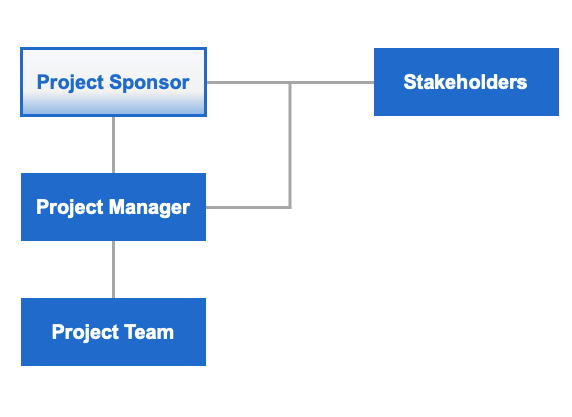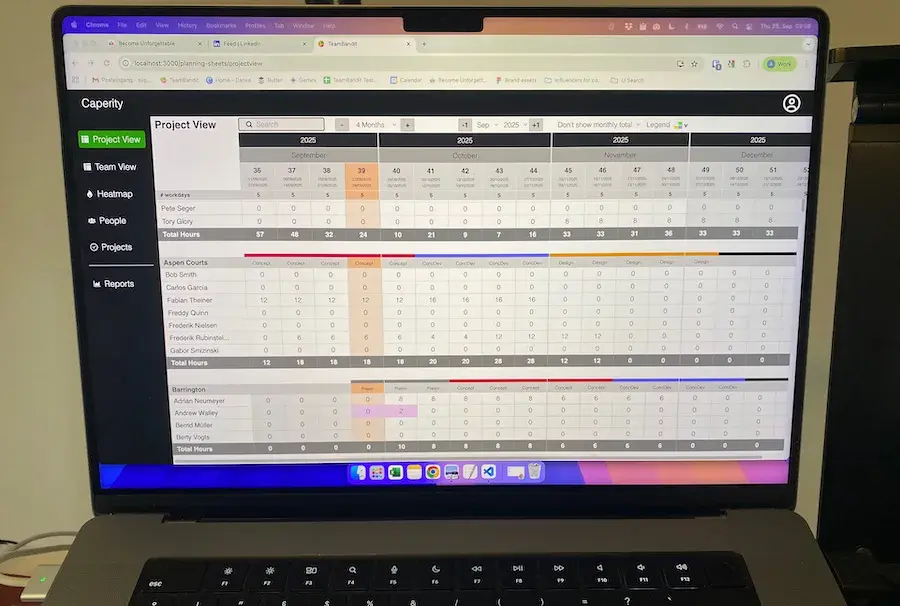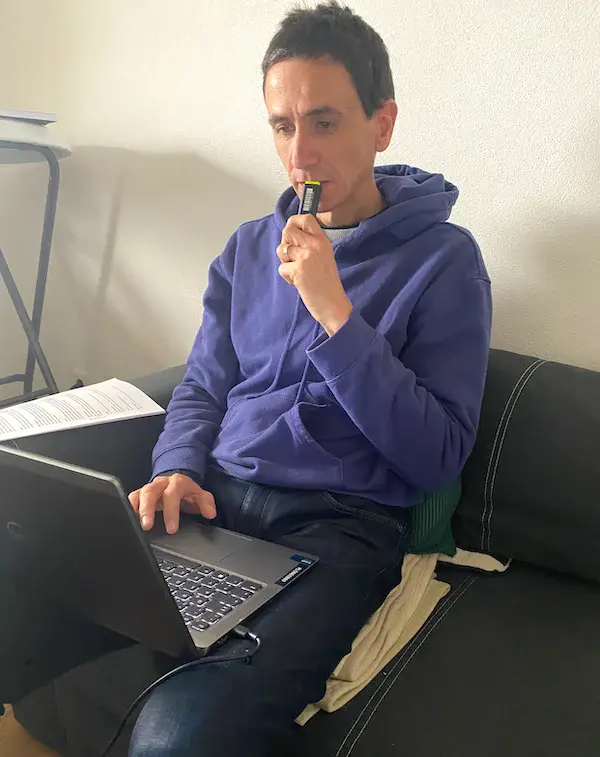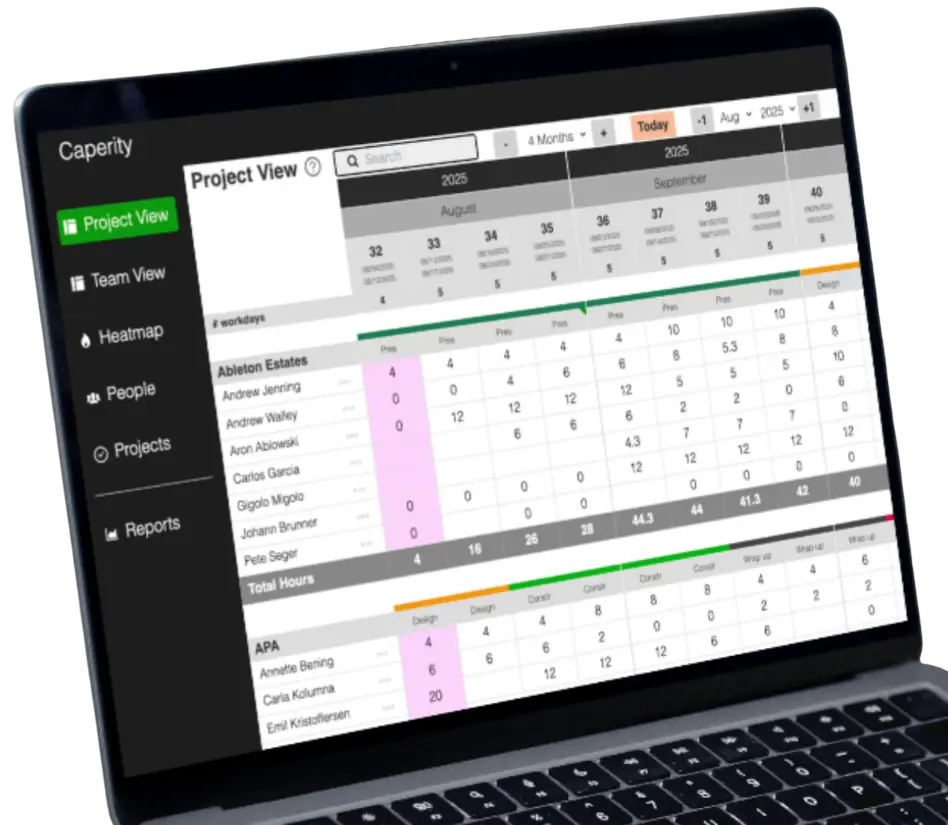When starting a new project at your company, one key question you should ask: “Do I have the necessary management support and funding for the project?”
If that’s not the case you may still move on. But you will be doing the project at your own risk. Without proper funding, and without management backing, it will be tough to make your project a success. So you want to look for what’s called a project sponsor.
In this article you’ll learn what exactly a project sponsor is. What their responsibilities are and how they can contribute to your project’s success. I will share some questions to help you select the right sponsor for your project.
What is a project sponsor: A practical explanation
You can find sponsors in almost every industry. Even within the sports business. For example, have you ever wondered how your favorite soccer team is able to play in stadiums all around the world? Well, the trick is in the sponsor, as they provide the soccer team with money required to buy equipment, attend training and cover travel costs.
In the context of project management, the project sponsor can be a person or a group of people that provide funds and resources for a project.
To use the PMI definition:
“A sponsor is the person or group that provides the financial resources, in cash or kind, for the project.”
Whether you are wondering if a project sponsor needs to be part of the management team or not. Then there is no fixed answer for this question. It just makes more sense that the sponsor is in a higher position of the company’s hierarchy. Because that enables them to have greater influence within the organization.

The project sponsor as a person or a group of people has an authorization in a project, but doesn’t deal with the daily operations and activities of a project, unlike a project manager.
Project Example: Implementation of a Production Planning System

Walter Tools is a mid-sized company that develops and manufactures drilling tools for the construction industry. At the moment, Walter Tools manages their entire business operations using Microsoft Excel, including their production.
As you can guess, this is not an ideal solution for a company that prides itself of being a technology leader. The company’s team are already struggling to handle the amount of business with Excel. And every now and then, the custom-built Excel solution — which is used to maintain bills of materials (BoM), production orders and schedules — and will break, leading to a disruption in production and requiring the team to work overtime to bring things back on track.
Recently the head of manufacturing communicated to the board that he “had enough” of their messy production management. He was sick of being involved in firefighting all the time.
That’s why he asked the board to approve a project for the rollout of a production planning system. A software that is used to plan and manage production.
Fortunately, the board liked the idea. So the head of manufacturing has been looking inside the organization to find partners that would support the project. The head of IT welcomed the idea of implementing a proper production planning system.
Who do you think should be the sponsor?
We’ll explore (and answer) that question in the article.
But let’s answer some common questions you might have.
Sponsor and client: Aren’t they the same?
As we said earlier, it is the project sponsor who pays for the project. Doesn’t that mean that the sponsor is identical to the client? Because the client eventually pays for the project, right?
That is correct. We can say that the sponsor is usually the same as the client. Or to be more precise: The client is usually a member of the “sponsor team”. Along with other stakeholders who support the project in a non-monetary way. In the real world, the sponsor role is often formed by a group of managers or executives and not just by a single person.
[optin-monster slug=”cstbrdnq1t3tkkhe8gv8″]
The Key Roles of a Project Sponsor
As you’ve probably noticed, the role of the project sponsor is very vague. So I will dissect it for you with practical examples using the production planning system project I introduced you to earlier.
A project sponsor can take different roles. But there are three main roles every project sponsor must always fulfill:
- Taking full ownership for the project
- Exercising authority to support the project
- Exercising influence and motivate the project team
Taking full ownership for a project
A project sponsor takes full ownership for the project in all of its stages. Because he/she is trying to achieve a certain “benefit” with the project (usually defined by the project goal. Learn what makes a great project goal).
The sponsor owns a project on the behalf of the organization. And treats it with full priority and attention. Also, the role starts from the initial stages of a project and extends to the final stages of a project including closure activities.
The project sponsor does not only do the minimum requirement to just get the project out of the way. Instead, he must commit the maximum attention possible to ensure the success of the project. Only a successful project will deliver the intended benefit for the sponsor and the organization.
Let’s use the product planning system rollout as an example: As you may remember, the project was initiated by the head of manufacturing. He and the manufacturing team will benefit the most from introducing a software-based production planning solution.
Therefore the head of manufacturing would be a suitable sponsor for this project. He and his team will also have the highest effort in the project, because the project will change production processes. So we can assume the head of manufacturing will take full ownership of the project because he has a vested interest in making this a successful project.
Authority
The project sponsor is typically from the upper management or executive level of a company. This enables them to make decisions that lower-level staff such as the project manager or the project team cannot take. Decisions that often involve large sums of money or decisions of strategic importance for the company.
In fact, every single project is prone to obstacles and conflicts that take place along the way. Therefore, the project sponsor has a key authoritative role in making the right decisions in order to resolve any drawbacks that are beyond the control of the project manager.
How does the sponsor exercise authority in real-life? Let’s look at our project example. The project has the goal of bringing Walter Tools Inc’s production onto a software-based solution, or what is also called a production planning system. Introducing a software to manage production is a big change! And the decision affects people and processes, and ultimately the entire business.
Therefore, the decision to implement a production planning system must be taken on a higher level. It cannot be taken by the production team or the project manager. Therefore, a good sponsor choice would be the Head of Manufacturing, who has initiated the project and who is also a member of the extended management board.
Influence on the project performance
The project sponsor constantly reminds the project manager and the team members of the importance of the project. The reminders can be in the form of regular meetings or emails or by simply visiting the teams’ offices to check on how they are doing.
The project sponsor’s influence can be seen in several roles, such as conflict negotiator, effective communicator, and project protector.
From our project example: there may be a lot of frustration in the project team because the project requires so much work — work which comes on top of people’s regular work.
The sponsor keeps reminding the team of the importance of the project. To motivate the team, the sponsor also organized a team event for the project team (the team will be going on a 2-day sailing cruise).

The Responsibilities of a Project Sponsor
Now, I will explain to you some of the actual responsibilities a project sponsor has in a typical project:
1) Assigning a project manager
It is the project sponsor’s responsibility to identify the right project manager. Someone who has the right attributes to take responsibility for a project. Some examples of PM attributes include effective communication, excellent leadership but also familiarity with the subject matter.
From our project example: Being the sponsor of the project, the head of manufacturing is looking for a suitable project manager from his team. The manufacturing project leader will collaborate with the IT project leader, who will coordinate the IT responsibilities in the project.
2) Providing financial resources for the project as well as any additional funds
The project sponsor is the spokesperson and the main person who gives approval to anything that has to do with funding a project. In the availability of a source of funding for a project, the project sponsor makes the required funding model on behalf of the company.
In our project example for the rollout of a production planning system, funding for the project is provided by the head of manufacturing of the company. He is also the sponsor of the project. In case the project requires additional money — for example to pay for scope changes or extra requirements identified during the project — it is also the sponsor who has to provide the extra funds.
An exception would be if the additional requirement was raised by another department (not by the manufacturing group, in this example), and if this department agrees to pay for the extra requirement.
3) Being a communication bridge
The project sponsor should act as an effective link between stakeholders and the project team members. This is another reason why you normally only appoint sponsors who are from an upper management or executive level. They have the direct link to other business units and departments and thus are able to rapidly align and communicate with other entities of the organization.
How does a sponsor act as a communication bridge in the real world? Let’s use our production planning implementation project as an example. Production planning is closely linked to the purchasing process. Why? The production planning system we are going to roll out as part of our fictitious project is going to track usage of materials.
If a material has been used in a production cycle, we must reorder the materials in the right quantity. This is where purchasing comes into play. So we must work closely with the purchasing team to establish an automated reordering process for materials used in production.
Our sponsor, the Head of Manufacturing, is concerned that the Purchasing team is not fully committed to the project. They are not supporting the Manufacturing team in the way they should, as the sponsor was being told by one of his members. The sponsor shared his concerns in a lunch meeting with the Head of Purchasing. He requested his director friend to ensure the team is fully committed to and supportive of the project.
4) Promoting the project
As the main driver of a project, the project sponsor has the responsibility to bring the project to the highest priority in an organization. This is not easy. People and business units are already involved in dozens if not hundreds of other projects. So, how can a project sponsor make sure their project is being given the amount of attention it really deserves?
Let’s take our project example again: As sponsor of the project, the head of manufacturing must promote the project within the company and drum up support. He can promote the project, for example, by presenting it in meetings and responding to questions from the workforce.
5) Evaluating the project’s progress
The project sponsor is highly motivated to make the project a success. Therefore he/she keeps an open eye throughout the entire project progress. This is an essential responsibility in order to be able to monitor and evaluate the progress compared to the actual plan. Therefore, he/she identifies any minor or major problems and implements the required changes.
How does the sponsor in our project example fulfill his duty to evaluate the project’s progress? He is getting a monthly update by the project manager. Thus he is always up to date when it comes to progress and issues.
6) Giving permission for any required change in the project scope
The planning of any project comes hand in hand with the scope of the project. However, sometimes in big and complex projects, the plan does not go according to plan. So, this requires an unplanned change in the project scope.
Therefore the project sponsor is the entity who has the authority to approve any changes in the project scope at any stage of the project (make sure you as project leader understand how to handle scope changes in a professional way).
Let’s illustrate this responsibility using our project example: As you may recall, the project’s focus is to move the company’s production processes from a manual way of planning to a software-based planning process. Initially, the idea was to implement the production planning solution only for the company’s main manufacturing processes.
But now, 3 months into the project, the team is discussing whether manufacturing of spare parts (a small part of the business) should also be managed by the new production software. The project team believes this makes sense. The project sponsor agrees to this change in scope, also because it does not impact the schedule in any way.
7) Requesting feedback
It is a very obvious task, but it can really determine the project’s success. There was a survey conducted in 2014 by PMI (link to survey paper), which aimed to evaluate the effectiveness of recording feedback by project sponsors in a project.
The results showed that the organizations that recorded feedback claimed better project progress and performance.
As a project sponsor, set a monthly feedback meeting with the project manager. This can help to set the entire team on track and keep everyone updated on the progress of the project. It can also help to identify any delays or issues and to discuss potential solutions.
8) Managing risks
Risks are common at any stage of any project. But what differentiates good project management from a bad project management is how they deal with potential risks (the first step is to perform a risk assessment).
How does the sponsor in our project example help to manage risks? As you remember, the project is concerned with the implementation of a production planning software for a company. Setting up the new processes is a huge effort for the manufacturing team. They are already working overtime. The project manager considers this a big risk – for the project itself but also for the manufacturing business.
What happens if a team member gets sick? They have no backup. To take some of the workload off the manufacturing team, the sponsor agrees to hire 3 external temp workers who support on the production line for the duration of the project. Now the project is in a much better situation, and the risk of a resource bottleneck has been mitigated.
9) Approving project deliverables
The project sponsor receives the project deliverables from the project manager and establishes the needed evaluations and assessments. This will eventually result in incorporating the project within the organization.
So how does a project sponsor effectively approve deliverables in the real world? We can look at our project example to illustrate this task. The project is supposed to roll out software-based production planning at a mid-sized company. Project sponsor is the head of manufacturing. The project team is mostly comprised of manufacturing staff as well as IT consultants.
One main deliverable that has to be prepared by the team: the production plan and parameters to be used by the software. This is the digital representation of a paper-based or Excel-based production schedule. The project sponsor will review the production plan the team has come up with and will give his approval.
Key questions to ask in order to identify the sponsor for your project
There are a few important questions you should ask in order to choose who would be the right sponsor for your specific project:
1. Who is getting the most value out of the project? Who is interested in making the project a success?
There is no point in recruiting a sponsor who gives a damn about your project. Or somebody who has lots of other priorities and cannot dedicate enough time to the project.
Using our project example, the sponsor must have an interest in turning the production fully digital, and to move away from Excel-based production planning — with all the problems that come with it. The sponsor needs to believe in the value a modern production planning system can provide to manufacturing but also to the entire business.
2. Who is paying for the project?
The person or entity paying for a project should always be the sponsor (or be part of the sponsor team).
3. Who has executive power in the given area of the project? Who is well-connected within the executive team?
It is important for the potential project sponsor to have a well-established connection with the executive management team. This helps to grant more efficient communication and decision making especially in critical situations within the project lifecycle.
4. Is the person (or sponsor team) highly respected by the team?
Since the sponsor is responsible for motivating the team, he/she should be someone who is recognized and valued within the company.
Summary
Do you now have a better understanding of the roles and responsibilities of a project sponsor?
To summarize it in a few words for you: project sponsorship deals with the project funding, liaising, reporting, decision-making, approving, communicating, and leading.
It is a very rewarding role. Especially when you see all of your efforts paying off while closing a project. But it is also a challenging role that requires quite some effort.
Regarding the tips to consider in order to identify the right project sponsor for your project, here is a recap: first, identify a targeted people or an organization who may have a high interest in the project’s success. Second, only seek who can pay for the project. Third, make sure the sponsor is in good connection with the executive team. And lastly, choose a sponsor who is well respected by the team members.
Author
-

Alaa is currently studying towards her MSc in Project Management at the University of Liverpool. She has a multi-diverse background that extends from medicine and engineering to creative arts and performance. Her vision is to integrate creativity with technicality, art with science, as she has an eye and a mindset for both equally. She is passionate about creative and innovative project management, which encourages curious and novel approaches and ideas.
View all posts



